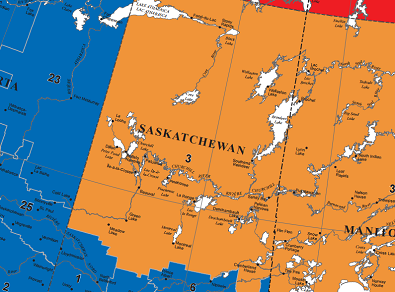By: Nick Pearce, Local Journalism Initiative Reporter, The StarPhoenix
Monday’s election sent thousands of Saskatchewan voters across a riding that’s roughly the size of Germany to elect a single MP.
Buckley Belanger, the NDP MLA turned Liberal candidate who lost that race, believes it’s time to draw Desnethé—Missinippi—Churchill River’s electoral lines to better reflect the vastly different geographic, cultural and economic realities of the riding, which stretches from agricultural communities in the south to fly-in First Nations in the far north.
“Whoever designed this riding didn’t put a lot of thought into it because there are just two dynamics that just completely contrast each other over a big piece of land,” Belanger said.
Monday’s election wasn’t the nail-biter pundits expected. Conservative incumbent and former Meadow Lake mayor Gary Vidal easily defended his seat, winning by an even larger margin than his first election in 2019.
He took 48 per cent of the vote over Belanger (27) and New Democrat Harmonie King (18).
Vidal has a strong base of support in Meadow Lake and other southern communities, while primarily northern First Nations and Metis voters tend to split between NDP and Liberal candidates.
Key northern endorsements from First Nations leaders like Lac La Ronge Indian Band Chief Tammy Cook-Searson and Peter Ballantyne Cree Nation Chief Karen Bird backed Belanger; others like La Loche Mayor Georgina Jolibois backed King.
Belanger said Vidal’s win was fair and square, but he maintains the riding’s design means the south can drown out smaller communities in the north and depress turnout. The riding’s voter turnout was the lowest in the province at only about 43 per cent.
“Our customs, our languages, and our standard of living is radically different from the southern part of the riding,” Belanger said.
University of Saskatchewan Professor Emeritus John Courtney, an expert on districting, said Belanger will likely get the chance to plead his case.
Federal electoral districts need to be reviewed every 10 years after the census. That means the government will launch a commission in the coming months, and give Belanger a platform to share his concerns, Courtney said.
Those talks take population as a top consideration, but they’ll also take into account historic patterns of the district, communities of interest and geographic size, he said.
“What ends up happening (in northern Sask.) is you really are mixing apples, oranges and baseball bats,” noted Ken Coates, who is a Munk Senior Fellow at the Macdonald-Laurier Institute and a professor at the Johnson Shoyama Graduate School of Public Policy.
Coates noted territorial northern ridings each have their own MP, despite relatively low populations. That raises an important issue of representation for northern jurisdictions with large amounts of natural wealth, he said.
“That’s a real challenge in Canada because we do not hear very much from these regions.”
